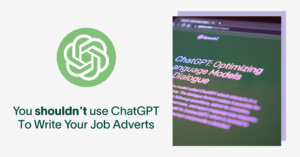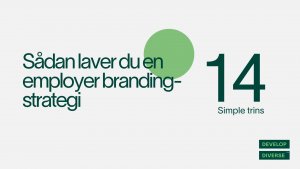Many companies are looking for ways to attract more women for positions in all levels of their organisations. Public and regulatory pressure is driving this change, which is putting higher demands on HR departments to make positive change for diversity and inclusion.
In their search for more female candidates, companies often resort to attract women with more feminine language in job descriptions in lack of better ways of doing so.
In this blog post, we explain why writing in a more feminine tone is not only bad for overall inclusion of other marginalised groups, but also how it may not have the desired effect to reach the organisation’s gender equality KPIs.
You are not appealing to all kinds of women
It is becoming more known that women read job descriptions differently than men do. But when you communicate to women in a certain tone with more feminine wording based on female stereotypes, you run the risk of reinforcing social stereotypes.
A stereotype is the generalised belief that members of a group e.g., women will have certain characteristics – despite having information about the individual. If you base your job descriptions on generalized beliefs about women, you allow for very little individual differences.
This means that you risk appealing to a limited pool of female talents with certain traits, if you communicate to them in a stereotypic way with an overload of perceived feminine words such ‘support’, ‘share’, ‘committed’, ‘feel’, ‘care’. Some women might be discouraged by the female tone and will steer away from applying.
Targeting women amplifies gender stereotypes in your organisation
When you write with women in mind, you are not working to get rid of bias – only amplifying a female bias. This means, you will not be improving the inclusivity of your recruitment process. Writing inclusively means to spread a language and attitude that is welcoming for all kinds of people taking more than just binary gender into consideration.
Age, ethnicity, sexual orientation, physical disabilities, neurodiversity and other gender identities are some other parameters important to consider when striving to improve diversity and inclusion in your company.
Research shows that some words can discourage certain groups of people, whereas other words are discouraging to all the groups mentioned. Writing inclusively will take all these groups into consideration and attract a lot broader talent mass.
When you write inclusively (not targeted), more women apply
If you avoid targeting women directly, but write inclusively, you will still get more female applicants. We see this result with our customers, who manage to attract more women by using inclusive writing.
Danske Bank got 46% more applicants in total when using Develop Diverse to write inclusive (non-targeted) job descriptions. They got 37% more female applicants – and 81% more qualified female applicants when using this approach.
Vestas also attracted more women by writing inclusively rather than targeted. Their Senior Director, Global Talent Acquistion states: “Not only did we increase the initial talent pool, but we also managed to increase the number of women in corporate leadership significantly after just seven months of using the Develop Diverse software”.
Targeting women with feminine language is a quick fix to getting more diversity, but also not the right cure to the actual problem. It will limit the diversity of the women, who will apply. Furthermore, targeting does not create inclusion as it amplifies certain stereotypes in the organization and hinders true inclusion, where everyone feels welcome, valued and heard.
Want to receive more insights like this? Sign up for our monthly newsletter here, where we share guidance for inclusive communication, DEI news and relevant articles.
Start writing inclusively today
Book a demo with one of our product experts and ask any question.





